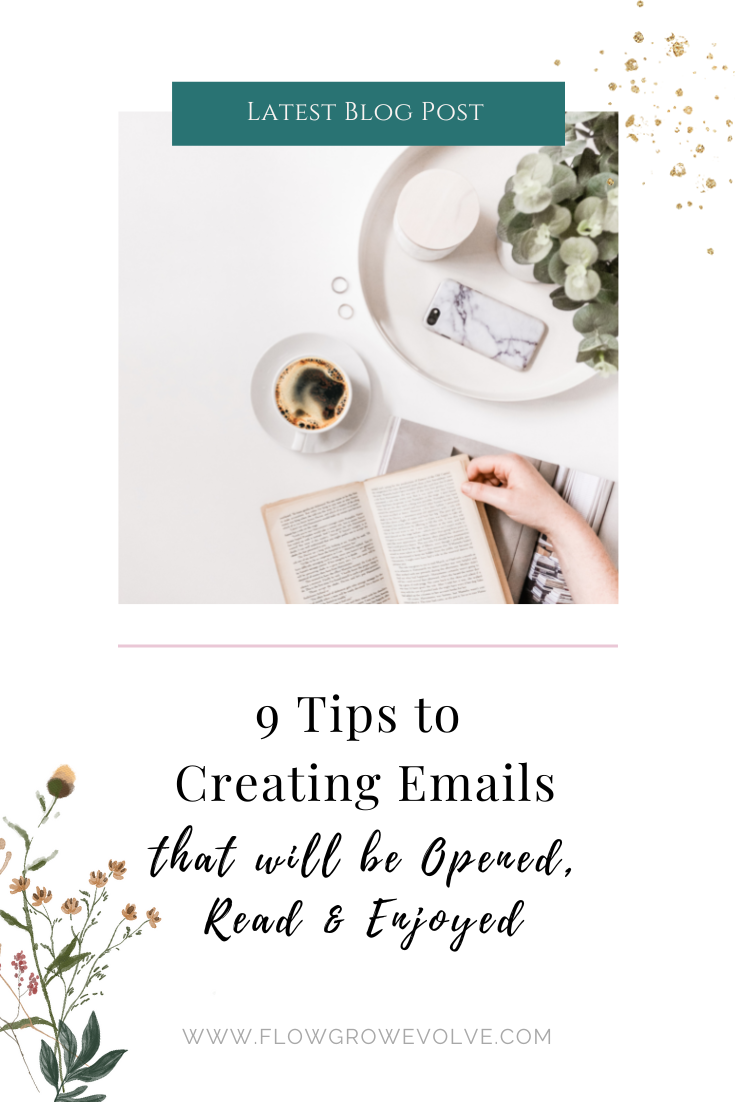Email marketing is one of the most underutilized marketing activities yet, it can be one of the most effective.
It can be akin to enjoying a cup of finely roasted coffee with a dear friend, or a jarring, dull, pushy or flavourless experience. It’s up to you of course, however with so much ending up in our overfull inbox already, let’s take a look at how we can create the types of emails that we would want to receive, read and enjoy ourselves.
How not to do Email Marketing
Have you ever unsubscribed to an email? Or gotten overwhelmed by the amount of sales emails you get from a shop after purchasing that one small gift for someone else or yourself? Have you ever not signed up for a useful downloadable for fear of the email sequences that you get in return?
You know the kind, that becomes more and more threatening, time is, after all, limited and if you don’t sign up for the exceptionally amazing deal where you get £10’000 of value for just £99 and it will all go up in a puff of smoke… of course, you are likely to get another chance, or an even bigger discount, depending on the level of desperation.
Seriously, this is what is sold as the way to do email marketing, so who can blame you if it’s an avenue of marketing that until now, you’ve not been too keen to explore?
But wait (bear with me, I am not selling any marketing bull*&%$)
So, why Bother with Email Marketing?
Did you know that email marketing offers the best ROI of all marketing activities? In 2020 that was £35 per £1 of investment. (Source Statista)
On top of this, 81% of SMBs use email for the acquisition of new clients and 80% use it to retain the clients that they currently have. Customers favour receiving an email over other forms of communication and personalised and welcome emails fare better than most. (Source: Hubspot)
Email marketing can and does get amazing results when it’s done right.
When someone signs up and gives you their email, it gives you immediate direct access to their inbox. This is like them opening the door to their home/ office and offering you a cup of tea and some biscuits. It’s the opportunity to provide value, have a one-to-one conversation and get to know each other better.
Just like you wouldn’t abuse their time or space as a guest in a person’s home, you have to ask why on earth some companies misuse that access online. An email should be a conversation, and like most conversations, it’s good to maintain respectful decorum. If you wouldn’t discuss the topic over a friendly cuppa, why send pushy emails to your audience?
Remember, the reader always holds the power, as the unsubscribe button is a mere click away. In the blink of an eye, you can be barred from their inbox as quickly as you got given access to it.
So, can email marketing be done right?
Absolutely! I have a few people whose emails I love to receive, my favourite is the one I get every so often from my favourite Irish comedian, they’re written in a way that I feel like his long-lost friend, sometimes if there’s a gig in town he has a few free tickets that he’ll leave at the door, just for me (and anyone else reading his emails). We’ve never met, but it doesn’t feel that way. Often, I wistfully even consider taking him up on the offer and travelling over to wherever he is performing in the world.
His emails are funny, down to earth, and feel like a conversation between us, even though I don’t reply – I do always open and read them, and I’ll be the first to know if and when he is ever performing nearby.
But you don’t need to be a comedian, or the most charming person on the planet to get your emails read, here are a few of my own tips to create cracking emails that can and will be opened, read and enjoyed.
1) Know your audience
Whether you have a big or small audience it’s important to know who they are, why they may have signed up to receive your emails, and what they expect to hear from you. If your audience varies, and you have a few personas (ideal customers) it is wise to segment them.
For instance, you may have a segment catering to customers, or potential customers, it all depends on the types of personas that you are looking to engage with. There may be instances that the same email goes to all of your audience however there are also going to be times when the news or content is specifically for just one group of your audience rather than to all of them.
Know the value you provide each segment, what they’d expect and what interests them, so the content you create emails that meet or exceed those expectations.
2) Personalise
Beyond just adding the Hello [name], write your emails as though you are speaking directly to your reader. A good email is worth stopping all other activities for, savouring it alongside a cuppa, just like you might do in person if you were catching up with a friend, or favourite customer. Take the time in what you want to say, and in doing so they’ll be much more likely to also take an equal amount of time to read it.
3) Know the goal behind each email
Before starting out be very clear on your reason for sending the email, the actions you would like your reader to take, and why from their perspective, would they take that action. When starting out it’s better to have a singular focus unless it’s a newsletter sharing story highlights. Yet, even a newsletter may have a focus that month, such as launching a new course.
When it comes to being clear on the action you’d like your audience to take, remember to try to think from the reader’s perspective ie. what is in it for them. If I had a penny every time I hear a manager say we just want to sell more – if that’s the sole focus of the email and all emails you send – it will be just another type of pushy sales email, which will result in getting you deleted instantly, ignored or lead to the dreaded unsubscribe.

4) Create & offer value
See sending an email as the opportunity to have a deeper conversation with your audience, it gives you the chance to be generous and giving. What can you share and give your subscribers that they will not get elsewhere?
Do they get secret recipes, first invites to events, and special subscriber-only offers, do you share additional tips, tricks, advice and knowledge that they won’t get elsewhere? Why would they subscribe, receive, read and be engaged with the emails that you send them? Do your emails educate, inspire, motivate and/ or entertain?
Find a way that you can bring your brand and company to life, and see every email as the chance to build on the relationship that you have with your reader. Maybe they’ve met you, or signed up on a whim, yet here you can start that conversation, and make sure after 6 months of having received direct communications with you, that they’ll have received value, gotten to know you better, and are a step closer to being a customer and advocate.
5) Make sure it has a cracking subject line
Sadly, even if you have the most incredibly divine email, without a decent title it will be overlooked or end up in the trash. The best way to stand out is to make sure it’s enticing, leaves a bit of curiosity, yet is very honest, simple and to the point.
A clickbait title may get you the clicks, however, if people click through and the content doesn’t meet those expectations, you’ll only leave them disillusioned or disappointed. Which isn’t at all what you want them to feel.
Make sure it’s catchy, yet real, and that it matches your brand, your personality and the content.
6) Be consistent – yet not forced
Set up a regular pattern, so you can manage your planning and your reader’s expectations.
It’s advised to look at what regularity suits your schedule, and then plan it and stick to it. Don’t send out emails for the sake of it, without thought or without value, and don’t let your audience forget who you are completely either – as with everything in life there is a balance – find what is right for you both.
It really doesn’t matter if you send an email out twice or once a month or every two months, know what suits you, and stick with that.
7) Email marketing automation
Email automation is like any tool, there are those that use it well and those that do not.
Those that don’t use it well leave you stuck in what can feel like a robotic nurture stream (a range of scheduled emails that you’ll receive after doing something like signing up for a webinar or downloading an ebook).
The idea is to introduce yourself and your services to your readers and allow them to get to know you, and your services better. However, if you are not careful and only push them through the overly planned sales funnel it can alienate rather than engage your readers.
Make sure as above you share value, that you understand the customer’s journey, and that you still keep it personal and conversational. Avoid having your customer in more than one automation, as it can lead to disjointed messaging that can confuse rather than help your readers.
8) Design
Email designs don’t need to rock our world, but it does help if they are on brand and look good across all devices. Make sure the design elements are consistent, are in line with the rest of your brand and messaging.
Test the email on both your laptop and phone, are the buttons clear and do the links go to the right place, does it read well be sure to check, and double-check for errors. While a mistake might happen once in and while it’s not going to leave a good impression if your audience gets a range of link corrections with every email sent, but I don’t need to tell you that right?
9) Use the right email marketing software
There is a lot of great software out there and yet each has its pros and cons. When deciding on the right software for you, it helps if you know the size of your list, how you’d like to use email marketing, how often you’d like to send an email, and whether you’d like automation.
The few I like best for their pricing, ease of use, style and the fact that they also offer automation are Cakemail, Mailerlite, Klavyio and Moosend. They offer attractive templates, forms, plenty of support and documentation on how to set it all up.
There are a few platforms that are designed especially for creatives, or those selling digital downloads, such as ConvertKit and Flodesk. These are a bit more of an investment but as they have a wider range of templates, and landing pages and in Convertkit you can also have a shop integration or sales flow as well.
If you are a growing service-based business a CRM that also offers good email functionality might be the ideal solution, as these focus more on the automation, and customer journey with a lot of additional options to improve your marketing and sales process, I have used and recommend either EngageBay or HubSpot.
Before deciding on the right software for your business list out the requirements that you have, and be sure to assess both your current and anticipated list of subscribers and goals. Also, be clear on the type of integration that you require, does it integrate into your shop, CRM and website? Then shortlist and test a few platforms first so that you can make sure that they match your needs and that you are comfortable using them.
You can also outsource this to a third party to either set up or run for you, but make sure that the software is something that they can also walk you through so that you are comfortable using it should you ever need to.
Get Ready, Get Creative, Create Value, & Click Send!
I understand that sending your first email and growing an audience can feel overwhelming and does take time. However, like most learning curves the more you practice the more you’ll improve, the more confidence you gain and the better the outcomes.
Email marketing can be one of the most valuable activities in your marketing toolkit, and because of this, it’s worth spending the time and effort to get it right.
If you haven’t got an email marketing strategy in place, the best news is, it’s never too late to start.
Any questions or feedback be sure to drop me an email 😉





